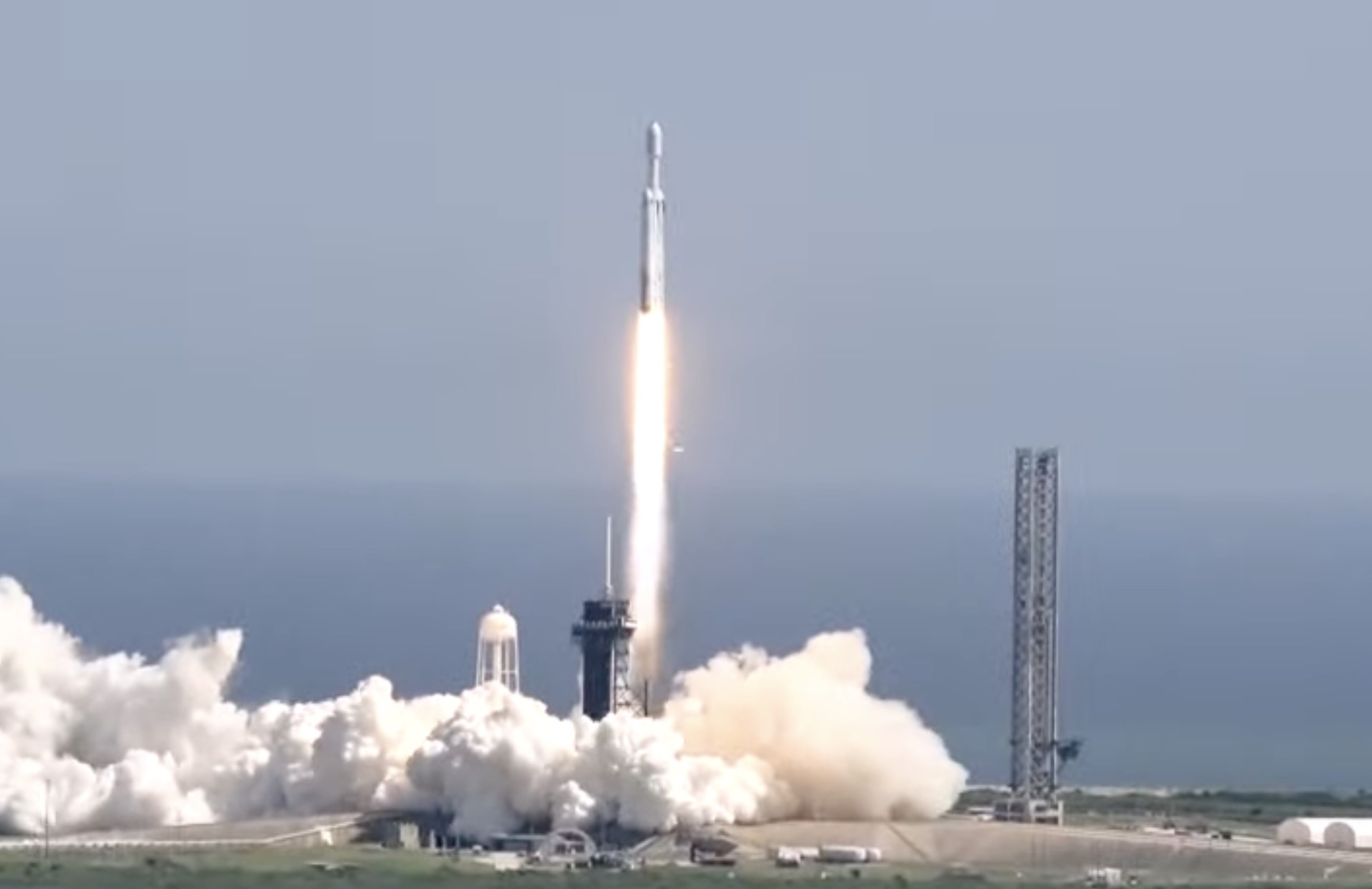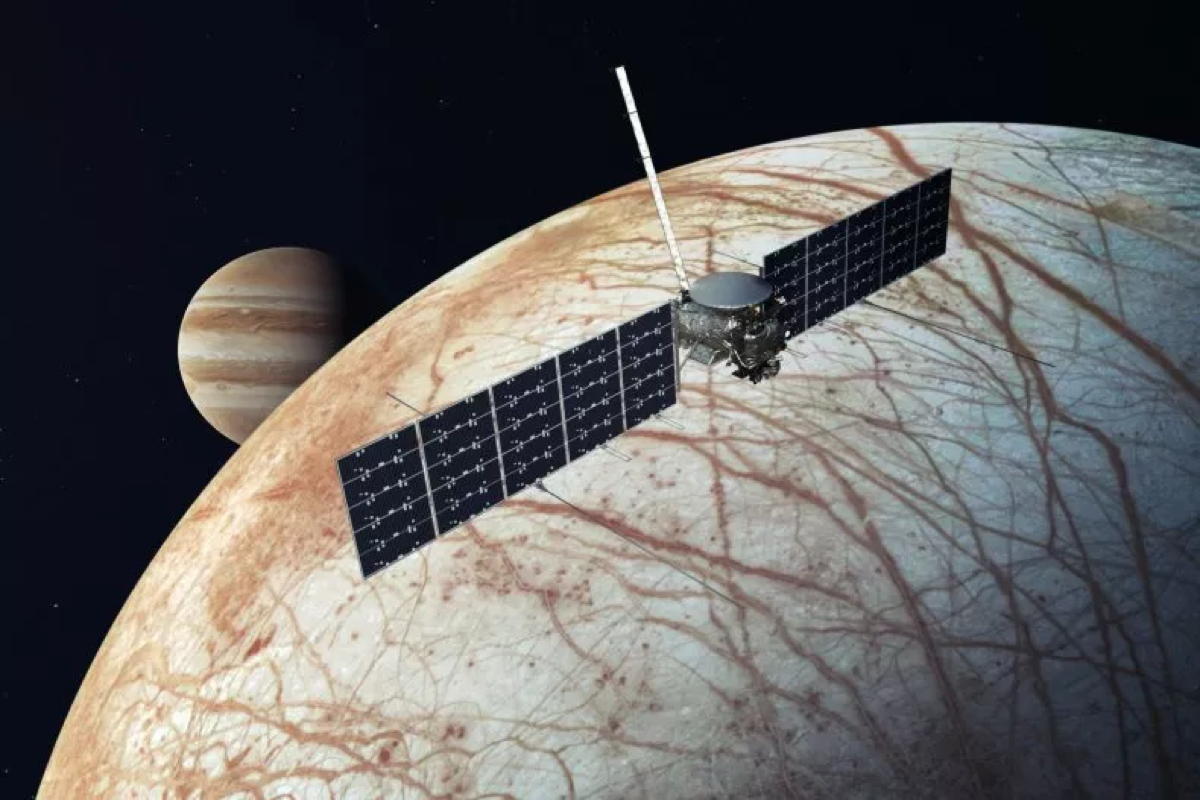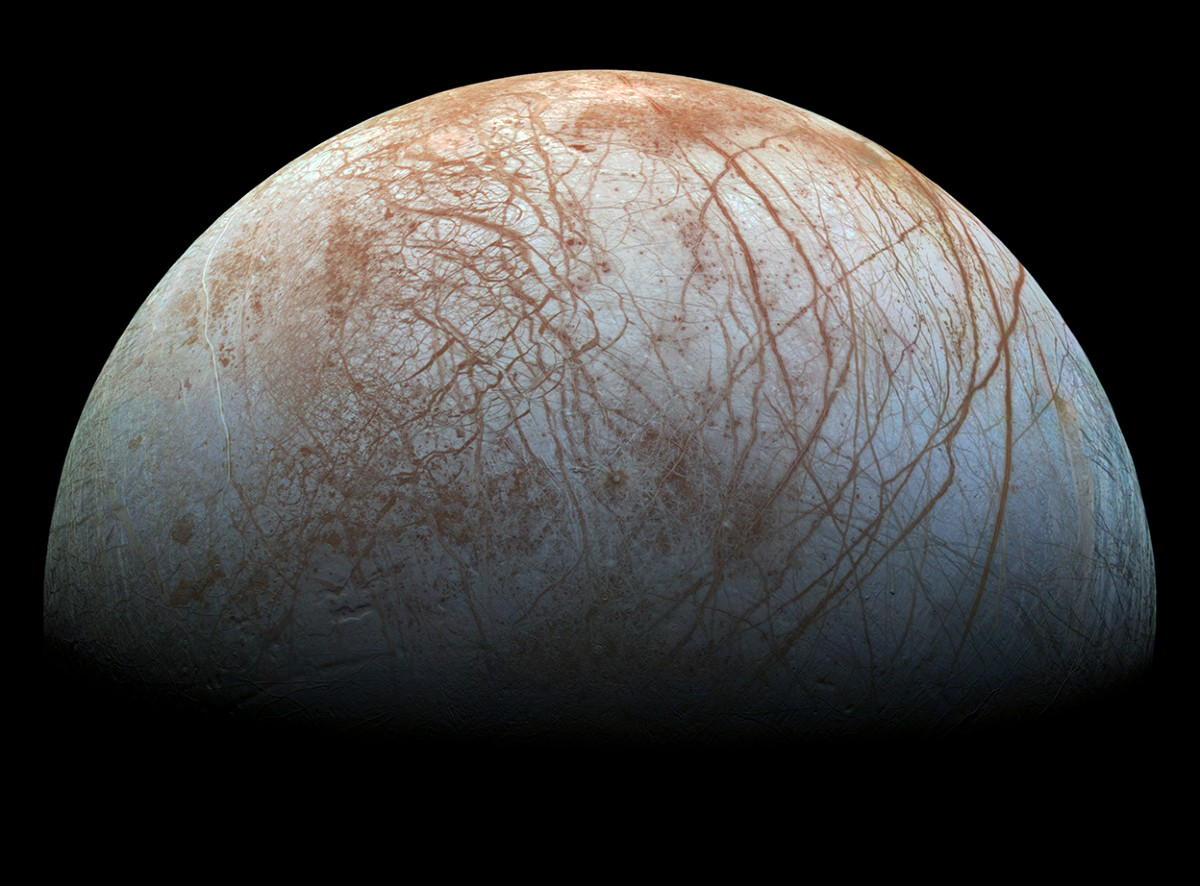|
Getting your Trinity Audio player ready...
|
A NASA mission to one of Jupiter’s moons lifted off late on Sunday to begin a journey of more than six years as scientists look for signs of life in the orbit of the gas giant.
The Europa Clipper spacecraft lifted off aboard a SpaceX Falcon Heavy rocket from NASA’s Kennedy Space Centre in Florida.
It is expected to reach Jupiter in April 2030, where it is to carry out 49 close-range flybys of Europa, coming as close as 25 kilometres, close enough to fly through some of the moon’s water spouts.
The mission will explore whether Europa has the “ingredients for life”, NASA said.

Ingredients for life
“Europa could have all the ingredients for life as we know it,” NASA associate administrator Jim Free said on a call with journalists.
“Water, organics, chemical energy and stability. What we discover at Europa will have profound implications for the study of astrobiology and how we view our place in the universe.”
The mission will seek to determine the thickness of the moon’s icy shell, which is thought to be up to 25km thick, to investigate its interactions with the ocean below it, and characterise its composition and geology.
The spacecraft’s nine instruments include two to capture dust and gas.
Europa Clipper is the biggest spacecraft NASA has ever built for a planetary mission, weighing more than 3.2 tonnes, nearly half of which is fuel, with 24 engines and measures more than 30 metres across with its solar panels deployed.
Europa Clipper is set to fly repeatedly through Jupiter’s magnetic field, which is 20,000 times more powerful than that of Earth.
“Jupiter is a very harsh radiation environment,” Joey Mukherjee, a data scientist and software angineer from Southwest Research Institute (SwRI) in San Antonio, Texas who worked on Europa Clipper, said in an interview.

Radiation
The spacecraft’s electronics, which are sealed in a shielded vauilt, will need to endure Jupiter’s radiation for only one out of every 21 days.
During Europa Clipper’s flybys the spacecraft will use another instrument called MASPEX, also developed at SwRI, to try to sniff particles emitted from the moon in huge geysers.
In November 2019 NASA scientists for the first time identified water in the geyser plumes after scritinising it through one of the biggest telescopes in Hawaii.
Europa Clipper will go a step further by detecting particles from the geyser with high fidelity at close proximity to Europa.
After the mission is over, NASA is considering using it to generate more scientific information by crashing the probe into Jupiter’s moon Ganymede, an event which would be observed by the Juice (Jupiter Icy Moons Explorer) mission launched by the European Space Agency (ESA) last year and due to arrive at the gas giant in 2031.






